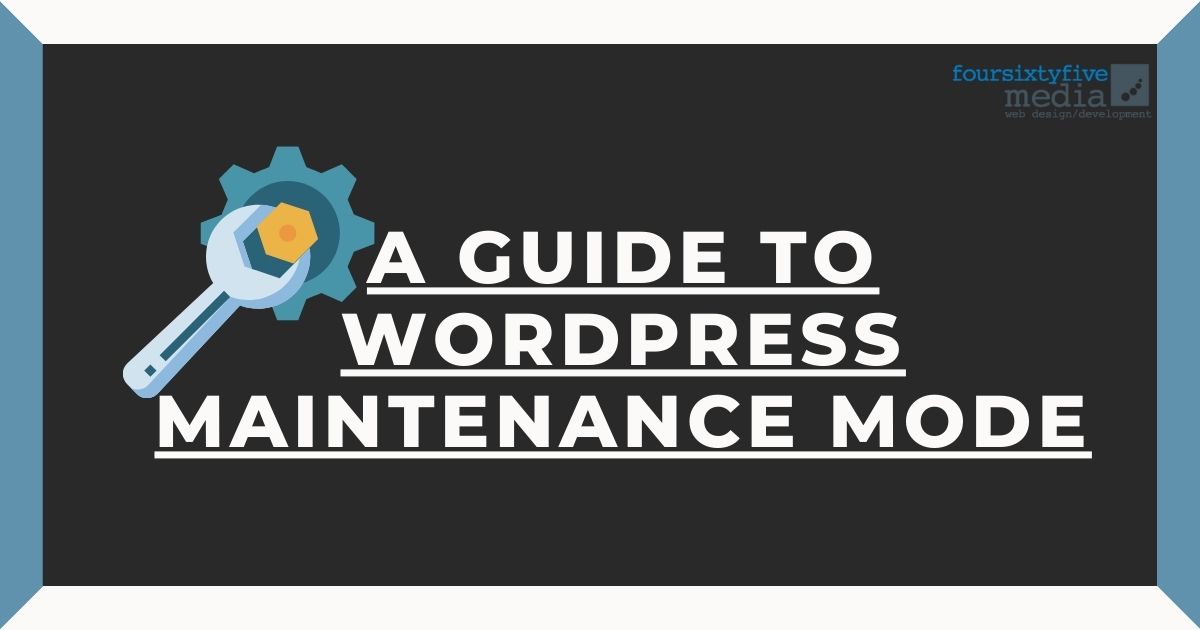Your website’s functionality is crucial in maintaining customer trust. When major changes occur on your website, you must consider your customers first. Enabling WordPress maintenance mode for your website is a great way to inform your customers about the situation and keep them engaged with your brand while the magic takes place. This article will give you an insightful tour of WordPress maintenance mode and how to use it for your website.
What is WordPress maintenance mode?
WordPress maintenance mode is the status applied to your website when undergoing major changes that can potentially break it. Small adjustments like publishing and deleting content or updating can be done when your website is live. But if it’s undergoing major improvements, it’s best to put it offline to prevent bad customer impressions.
When your website is under maintenance mode, visitors are shown a user-friendly notification or screen is shown to visitors instead of a broken website. It informs the visitors why your website is offline and when it’s possible to be live again. Maintenance mode also gives you complete freedom on who has access to the website while installing new plugins, changing themes, or doing other major kinds of work on your website.
How does it work?
WordPress maintenance mode takes place using the wp_maintenance function and making a maintenance file that carries the message. Once the construction process is accomplished, you can set WordPress to erase the maintenance file, and your website will function as usual.
Why activate WordPress maintenance mode?
Major changes, such as new plugin configurations and theme customization, can lead to data losses or permanently damage your website. So it’s important to take note of these reasons to put your website on maintenance mode:
Prevent bad customer impressions.
When undergoing maintenance, your WordPress website may not work properly, and customers might assume it has crashed. It might confuse and irritate customers if they constantly encounter redirects and broken links. If this happens, your customers might leave and not return, resulting in traffic loss.
WordPress has a default maintenance mode. Nonetheless, its flash page is a plain Hypertext Markup Language (HTML) page that says, “ Briefly unavailable for scheduled maintenance. Check back in a minute.” which might look boring. Suppose you have a custom WordPress maintenance mode page. You can provide a great user experience by customizing the flash page’s overall design and message content according to your brand and customer’s taste.
You can also reduce your website’s maintenance time through a staging environment. A staging environment is a duplicate of your website where you can work on major adjustments without affecting your true website.
Reduce security risks.
Your website is prone to internet risks during maintenance. For instance, if a malicious link is found on your website, it is best to take it offline until adjustments are made. If you activate maintenance mode, you keep your website secure and ensure visitors’ safety.
Promote an upcoming website.
Another function of a WordPress maintenance mode is to inform customers of an upcoming website. Through maintenance mode, you can create a “Coming Soon” screen to notify your customers about your new website and when they should visit again. Once your website is ready, you can turn off the maintenance mode and welcome your visitors with open arms.

Ways to activate your website in maintenance mode.
Putting your WordPress website in construction or maintenance mode doesn’t have to feel like calculus because while some methods require coding, there are WordPress plugins available for this very purpose.
- Utilizing SeedProd plugin.
SeedProd is a plugin meant for creating landing pages. It has a wide library of landing page templates and themes that you can use. It allows you to easily build landing pages for your “Maintenance mode” and “Coming Soon” notifications through its drag-and-drop builder.
You can also gather subscribers and leads while your website is undergoing maintenance by including modules like subscription forms, opt-in forms, contact forms, and giveaways on your landing page. This way, your customers will be notified when your website is back again by signing up. This plugin has a free version but getting the most out of it is by acquiring its premium plan, which starts at $39.50 per year.
- Using WordPress maintenance mode plugin.
The WordPress maintenance mode plugin allows you to activate maintenance mode without coding. Like SeedProd, you can add a maintenance page to your website to inform visitors that it is under maintenance, a landing page for an existing website, and a coming soon page for your new website. A unique feature of the WordPress maintenance mode plugin is its countdown timer for visitor information.
- WordPress maintenance plugin.
WP Maintenance is a plugin that puts the website on the waiting time while it’s undergoing maintenance or launching. What’s unique about WordPress maintenance plugins is that you can customize the maintenance landing page for your site. It’s the best option to make a simple maintenance mode page. However, the disadvantage of the WP maintenance plugin is that it uses the standard WordPress page and post editor, which is not powerful as SeedProd’s drag-and-drag builder.
- Utilizing a custom function.
This method can be tricky, but you can perform this by yourself. When using a custom function, go to “appearance” in your WordPress admin dashboard. Then click Theme Editor. You will see a list of theme files on the right side. Select the theme function because this will open the functions.php file and enable you to edit the code in the editor. At the end of the file, you should add the following codes:
// Activate WordPress Maintenance Mode
function wp_maintenance_mode() {
if (!current_user_can(‘edit_themes’) || !is_user_logged_in()) {
wp_die(‘<h1>Under Maintenance</h1><br />Website under planned maintenance. Please check back later.’);
}
}
add_action(‘get_header’ , ‘wp_maintenance_mode’);
The default maintenance screen for WordPress will be activated once finished. However, you can adjust the code to alter the HTML message on your visitors’ screen. After this, look for the wp_die function followed by the HTML code in the parentheses within the fourth line of the codes. You can edit this text to the message you desire.
- Using the hPanel dashboard.
The Users of Hostinger’s WordPress hosting, shared hosting, and cloud hosting can easily activate their WordPress maintenance mode. They need to log in to their hPanel account, go to the WordPress dashboard and click core. They should then find the maintenance mode option and click on the slider. This option is easy as the user doesn’t have to navigate with WordPress plugins. However, the downside of using the hPanel dashboard is that users can only see the default message, as website owners cannot customize the landing page.
Guide on WordPress maintenance mode: Conclusion
Sustained website maintenance is necessary to keep it up-to-date and functional. Whether it’s customizing your website’s overall appearance or installing plugins, there are instances where you might need to put your website in maintenance mode. Activating WordPress maintenance mode can help you avoid bad customer impressions, reduce security risks, and promote your upcoming website.
You have different options to put your website in maintenance mode and temporarily replace a page of your website. You can acquire a web-hosting panel, use a WordPress plugin, or fix a WordPress file. The decision is yours to make, as long as it suits your needs or technical skills.
But if you’re a beginner WordPress website owner or want to focus on expanding your brand, choosing a reliable partner for your website maintenance is the best option. Our WordPress experts at 465Media are more than glad to help you with your website needs.




